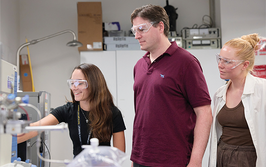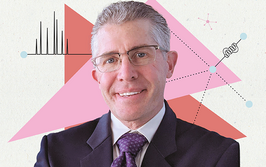Communicating or Confusing?
When sharing work with peers, perhaps it’s best to keep it simple.
It’s something that those of us who read scientific articles for a living have long suspected; scientific journal articles are becoming more difficult to read. A group of Swedish researchers assessed the readability of 707,452 abstracts published between 1881 and 2015 in top biomedical journals using two standard formulae (Flesch Reading Ease and New Dale-Chall). Both systems calculate readability based on length of sentences, syllables per word, and number of ‘difficult’ words – and both confirmed that the readability of scientific abstracts has declined over time (1). In fact, the team noted, “more than a quarter of scientific abstracts now have a readability considered beyond college graduate level English.”
But why? Apparently, a sharp increase in the use of scientific jargon – jokingly referred to as ‘science-ese’ – is to blame. Jargon isn’t inherently bad – it can convey information to a specialist audience with minimum word count; however, a combination of technical terms and unnecessarily complex language can make even the most scientifically exciting papers a hard slog for the reader. Scientists are only human, after all. Having a PhD doesn’t (always) give you superhuman reading comprehension skills – or make you immune to boredom or frustration. In many cases, the concepts being expressed are not hard to grasp – when I talk to scientists about their work, they readily communicate it in a way that I can understand. Shouldn’t we strive to do the same in our written work?
As we frequently see in our own pages, some of the most fruitful partnerships are forged by scientists in very different disciplines – and breaking down communication barriers is often an ingredient for success. Writing more readable papers is one way to encourage wider collaborations – and that can only be a good thing. Given the collaborative and diverse nature of the field, do analytical scientists need to be even more aware of the need to communicate clearly? I would say so.
The Analytical Scientist has always aimed for clarity over complexity. By bringing you the stories behind the science, we hope to encourage the free flow of ideas between different disciplines, application areas and techniques. From 3D printing to the smell of death, we want you to be able to explore all of our articles, whether you’re a world expert in the topic or simply curious.
How readable do you find The Analytical Scientist? Could we improve? Please let me know: [email protected].

Charlotte Barker
Editor
- P Plavén-Sigray et al., “The readability of scientific texts is decreasing over time” (2017). Available at: bit.ly/2nAd3gf

After studying biology at Imperial College London, I got my start in biomedical publishing as a commissioning editor for healthcare journals, and I’ve spent my career covering everything from early-stage research to clinical medicine.

















